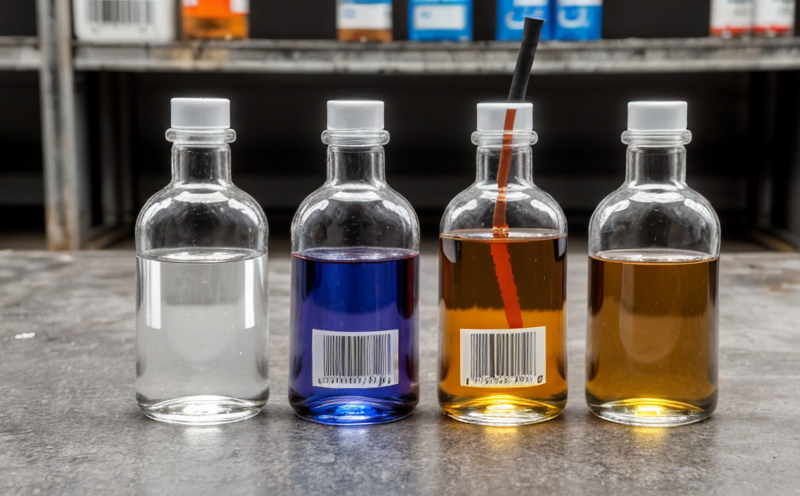BS EN ISO 9227 Salt Spray Stability Testing of Metallic Coatings
The BS EN ISO 9227 salt spray stability test is a critical method in the quality assurance and reliability evaluation of metallic coatings. This standardized procedure evaluates how well metallic coatings withstand exposure to a simulated marine environment, which mimics corrosive conditions found in coastal areas and industrial environments.
Metallurgists, quality managers, compliance officers, and R&D engineers rely on this test to ensure that the materials used are durable and reliable. The BS EN ISO 9227 test is essential for industries such as automotive, aerospace, construction, and marine engineering, where exposure to salt spray can significantly affect the longevity of metallic surfaces.
The testing process involves exposing coated metal specimens to a continuous stream of neutral saltwater aerosol in a closed chamber. The temperature within the chamber is maintained at 35°C ± 2°C, and the humidity level inside the chamber should be kept between 93% RH (relative humidity) and 97% RH.
The test duration can vary depending on the desired outcome, but it commonly ranges from 168 hours to 1000 hours. During this period, the specimens are continuously exposed to the salt spray environment. The purpose of this exposure is to assess any changes in the appearance, thickness, or adhesion of the coating over time.
Upon completion of the test, the specimens are inspected for any visible signs of degradation such as blistering, cracking, rust formation, or loss of adhesion. These observations provide valuable insights into the stability and longevity of the metallic coatings under marine-like conditions.
This testing method is widely recognized and standardized by BS EN ISO 9227, ensuring that results are consistent across different laboratories worldwide. This standardization allows for accurate comparisons between different materials and processes, enhancing confidence in product reliability.
For industries where the durability of metallic surfaces is crucial, this test can be an essential step in the development and quality assurance process. It helps to identify potential weaknesses early on, allowing manufacturers to make necessary improvements before products reach the market.
Why It Matters
The BS EN ISO 9227 salt spray stability test is crucial for several reasons. Firstly, it serves as a robust method to evaluate the corrosion resistance of metallic coatings in real-world environments. By simulating marine conditions, this test provides insights into how well the coating can withstand exposure to saltwater, which is a significant factor in determining its longevity.
Secondly, this test is essential for regulatory compliance and product certification. Many industries have specific standards that require materials to pass certain tests to be considered safe and reliable for use in their applications.
Finally, the BS EN ISO 9227 salt spray stability test helps manufacturers make informed decisions about material selection and process optimization. By identifying potential issues early on, companies can improve their products' performance and reduce costly recalls or replacements later in the product lifecycle.
Industry Applications
| Industry Sector | Application |
|---|---|
| Aerospace | Evaluating the durability of metallic coatings used in aircraft components exposed to harsh marine environments. |
| Automotive | Assessing the performance of paint and metal finishes on vehicle bodies and components, particularly those used in coastal areas or industrial regions. |
| Construction | Evaluating coatings for use on steel structures and other metallic materials exposed to corrosive elements. |
| Marine Engineering | Determining the suitability of coatings for marine vessels, offshore platforms, and related equipment. |
- Aerospace: Ensuring that metallic components can withstand exposure to salt spray without degradation.
- Automotive: Guaranteeing the longevity of vehicle finishes in coastal or industrial regions.
- Construction: Providing reliable coatings for steel structures and other metallic materials exposed to corrosive elements.
- Marine Engineering: Assessing the performance of coatings used on marine vessels, offshore platforms, and related equipment.
Environmental and Sustainability Contributions
The BS EN ISO 9227 salt spray stability test plays a vital role in promoting sustainability by ensuring that materials used in various industries can withstand harsh environmental conditions without degradation. By identifying coatings with superior corrosion resistance, this test helps reduce waste from premature failures and extends the service life of products.
Furthermore, by selecting materials that pass these tests, manufacturers contribute to reduced resource consumption. This is because they avoid using substandard materials that would eventually need replacement due to failure. Additionally, longer-lasting products mean less frequent replacements, leading to lower energy consumption during manufacturing processes and transportation.
The test also supports sustainable practices by enabling industries to innovate and develop new coatings with improved durability. This innovation can lead to the creation of eco-friendly materials that not only perform well in challenging environments but also have a reduced environmental impact throughout their lifecycle.





